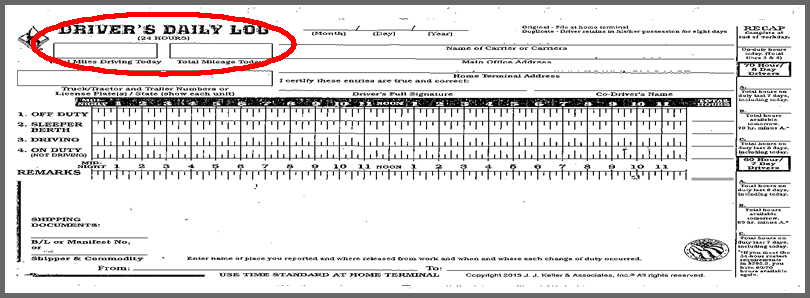Truck drivers tend to be an independent-minded lot and sometimes filling out a truck log book can seem like a hindrance. Such rules are often vital, however, as a means of preventing driver fatigue and overwork. It’s for this very reason truck drivers are required to fill in Department of Transportation logbooks. It’s a means of making the trucker responsible for monitoring his or her own on and off-duty hours.
The Federal Motor Carrier Safety Administration (FMSCA) requires all truckers fill in a daily logbook. The intent is to ensure drivers are not on the road in excess of Hours of Service regulations. Failure to fill in the logbook can result in costly penalties, and while it may be tempting to “fudge” your figures, falsifying logbooks runs the risk of prosecution. All in all, it’s safest to fill in the logbook every day and keep accurate records.
Filling in a DOT Logbook
Fortunately, logbooks are fairly easy to maintain once you’re in the habit of updating them frequently. First you’ll enter basic information, such as the date, the name of your carrier, your truck number, and the total hours driven over a twenty-four hour period.

This done, fill in the start time of the twenty-hour period, and the names of any co-drivers, if applicable. You’ll also need to include shipping documents specifying both your carrier and the type of commodity you’re hauling. Enter the point of origination in the “From” line, and your destination in the “to” line.

Graphing Your Progress
So far it’s pretty simple. Throughout the day you’ll also chart your activities on a graph grid. The grid has a box for each hour of the day, divided into fifteen minute sections. Each box includes lines for different activities, such as sleeping, off-duty, on-duty, and on-duty but not actually driving.

After completing an activity, draw a straight line through the appropriate activity line for the amount of time you took to complete the activity, then a vertical line to the start of the next activity. Use the remarks section to record your time and location. For location, record the nearest milepost and highway number for maximum accuracy. Other details you may need to mention include:
- Accidents
- Courtesy checks
- DOT inspections
- Overweight citations
- Road fuel purchases
- Speeding citations

At the end of the twenty-four hour period, count up the hours in your log. If they don’t total twenty-four, go back and make the corrections immediately, while the time frame is still fresh in your mind. And remember, you are responsible for anything that goes into your truck log book —not the carrier.

